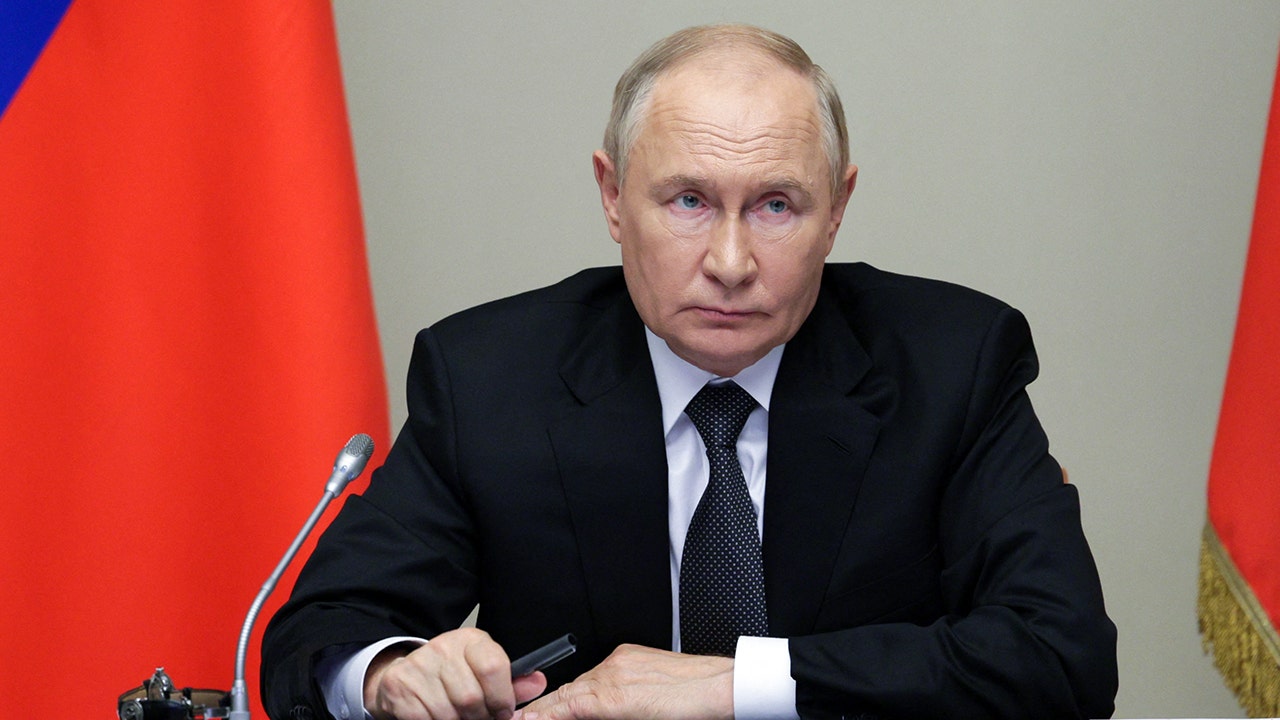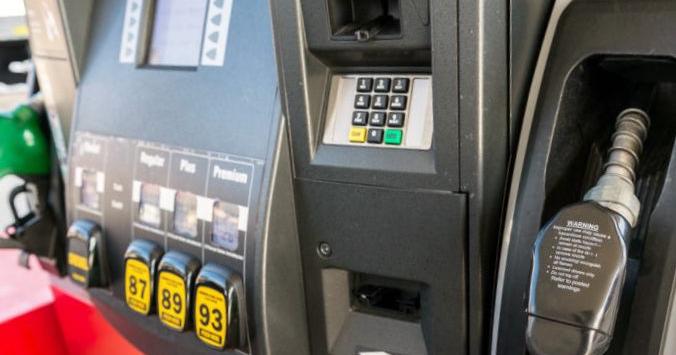World
Breakingviews – El Nino will brew up potent new economic storm
/cloudfront-us-east-2.images.arcpublishing.com/reuters/WYV4XIGODZIKXMNDSSUHJ7OQAQ.jpg)
MELBOURNE, July 4 (Reuters Breakingviews) – Just when you thought it was safe to hope interest rates might soon peak, along comes more bad news. It looks likely that the El Nino weather phenomenon has returned, according to both the U.S. National Oceanographic and Atmospheric Administration and the Australian Bureau of Meteorology. Its appearance usually results in, or exacerbates, floods, heatwaves, water scarcity and wildfires, especially in the southern hemisphere. The damage these inflict on crops and infrastructure is inflationary, putting pressure on central banks to tighten monetary policy. If climate change makes such events stronger and more frequent, supply shocks will become embedded.
This year’s El Nino is shaping up to be a record breaker. The phenomenon is created when the surface temperature of the eastern and central Pacific Ocean is at least 0.5 degrees Celsius warmer than average, weakening or reversing the flow of the trade winds. The strongest one to date was in 2016, when the sea surface temperature hit 2.6 degrees above average; that level could reach 3.2 degrees Celsius this November, Australian meteorology’s finest revealed a couple of weeks ago.
So far, traders have focused on some of the commodities most likely to be affected. Rice futures hit an almost 15-year peak in June, excluding a 2020 pandemic spike. India, Thailand and Vietnam, the three largest exporters of this staple, have already this year experienced record or near-record high temperatures and tend to suffer from hotter, drier weather due to El Nino. In anticipation of water shortages, Thai authorities in May asked farmers to plant just one, rather than two, crops this year. Vietnam has already been under drought conditions, which has also affected yields from its robusta coffee trees. The country is the top producer and exporter of the bean which is used for instant coffee as well as making up around 15% of Italian espresso blends. Last week, the robusta futures contract reached its highest price since being introduced in 2008, having risen 60% this year.
By one reckoning, a single El Nino event might seem manageable. It can push up the price of oil almost 14% and non-fuel commodities by more than 5% within a year of an event, the International Monetary Fund calculated in 2015. But the biggest increases in overall inflation over a 12-month period were only around 1 percentage point and limited to a handful of the most exposed countries like Brazil, Indonesia and Mexico, the IMF analysts concluded. Researchers at the University of Dartmouth this year extended the timeframe and estimated that the 1998 El Nino, the second strongest on record, caused global economic losses of $5.7 trillion, in 2017 dollars, over five years.
Much has changed since then. First, the world is warmer: the eight years since the IMF paper have also been the world’s eight hottest on record – even with cooler Pacific Ocean temperatures since 2020 giving rise to El Nino’s opposite, La Nina. On the one hand, global warming has exacerbated aridification in parts of Europe, China, Southeast Asia and the United States, some of which El Nino may yet worsen. On the other hand, it creates the conditions for heavier deluges because for every 1 degree Celsius increase in its temperature, the air can hold 7% more water. That means crops which usually benefit where El Nino brings wetter conditions – such as U.S. soybeans, which have been hit hard by lack of rain – now face a greater risk of being swamped.
Oceania felt some of those effects during La Nina. A second consecutive year of floods in Australia contributed to food inflation rising at an annualised rate of 9% in the three months to September 2022, its highest level since 2006, per Rabobank. Meanwhile, New Zealand’s fruit and vegetable price index spiked 22% year-on-year in March, a month after cyclone Gabrielle hit. Heavy downpours – and frost – also depleted harvests of arabica coffee in top exporter Brazil and other Latin American countries in 2021 and 2022, pushing the futures price up to a decade high in February last year. That also helped spur increased demand for robusta beans.
The direct impact of El Nino- and La Nina-affected weather on sowing, growing and harvesting is not the only economic consideration. Infrastructure can be damaged or destroyed: early last year, for example, floods swept away a 30-kilometre stretch of the only rail line that transported food to Western Australia. And sugar futures may in part have hit an almost 12-year high in June due to concerns that excess humidity could bring a repeat of the 60% increase in work stoppages that beset Brazil’s cane fields in 2016, per Barclays. But there was another reason: a combination of a disappointing crop last season and the prospect of El Nino causing water shortages prompted India, the world’s second-largest producer, to effectively ban exports until next year.
There are other recent examples of protectionism under the guise of national food security. Last year New Delhi banned exports of what’s called broken rice and imposed a 20% levy on other grades heading overseas after below-average monsoons, even though its stock levels were decent, notes Barclays. The restrictions are still mostly in place. In April last year, meanwhile, Indonesia temporarily banned the export of palm oil – used in all manner of foodstuffs and other goods – as domestic cooking oil prices surged. It’s not hard to imagine the country, which accounts for more than half of all palm oil exports, using El Nino to justify reimposing the embargo, or other producers of agricultural goods taking similar actions.
All these uncertainties are a store of potential supply shocks capable of driving up prices over the next year alone. Rising temperatures due to climate change will make them more endemic; the World Meteorological Organisation in May declared there’s a 98% chance that the next five years will be the hottest period on record thanks to the combination of greenhouse gas emissions and El Nino. After struggling to cope with an inflation storm caused by the pandemic and the war in Ukraine, policymakers have a potent new economic hurricane coming their way.
Follow @AntonyMCurrie on Twitter
CONTEXT NEWS
The Australian Bureau of Meteorology on June 20 updated its estimate for the mean surface temperature of the sea in the east-central tropical Pacific Ocean to be 3.2 degrees Celsius above average in November this year. The metric is one of the key inputs for assessing whether El Nino conditions will return, with the base case being 0.5 degrees Celsius above average. The Australian BOM on June 6 raised its El Nino outlook status from “Watch” to “Alert”, meaning it sees a 70% chance of the weather system developing this year.
On June 8 the U.S. National Oceanographic and Atmospheric Administration’s Climate Prediction Center issued an advisory that El Nino conditions “are present and are expected to gradually strengthen into the Northern Hemisphere winter”.
The highest temperature reached in any past El Nino was 2.6 degrees Celsius above average in 2016.
Editing by Peter Thal Larsen, Katrina Hamlin and Thomas Shum
Our Standards: The Thomson Reuters Trust Principles.
Opinions expressed are those of the author. They do not reflect the views of Reuters News, which, under the Trust Principles, is committed to integrity, independence, and freedom from bias.

World
Rental home investors poised to benefit as mortgage rates, high home prices sideline buyers in 2025
LOS ANGELES (AP) — Rental homes will remain an attractive option next year to would-be homebuyers sidelined by high mortgage rates and rising home prices, analysts say.
American Homes 4 Rent and Invitation Homes are two big real estate investment trusts poised to benefit from the trend, say analysts at Mizuho Securities USA and Raymond James & Associates.
Their outlooks boil down to a simple thesis: Many Americans will continue to have a difficult time finding a single-family home that they can afford to buy, which will make renting a house an attractive alternative.
It starts with mortgage rates. While the average rate on a 30-year mortgage fell to a two-year low of 6.08% in late September, it’s been mostly rising since then, echoing moves in the 10-year Treasury yield, which lenders use as a guide to pricing home loans.
The yield, which has hovered around 4.4% this week, surged after the presidential election, reflecting expectations among investors that President-elect Donald Trump’s proposed economic policies may widen the federal deficit and crank up inflation.
Analysts at Raymond James and Associates say they see mortgage rates remaining “higher for longer,” given the outcome of the election. Last week, they reiterated their “Outperform” ratings on American Homes 4 Rent and Invitation Homes, noting “we are increasingly confident in the longer-term outlook for single-family rental fundamentals and the industry’s growth prospects.”
They also believe the two companies will continue to benefit from “outsized demographic demand for suburban homes,” and the monthly payment gap between renting and owning a home, which they estimate can be as much as 30% less to rent.
Analysts at Mizuho also expect that homeownership affordability hurdles will maintain “a supportive backdrop” and stoke demand for rental houses, helping American Homes 4 Rent and Invitation Homes to maintain their tenant retention rates.
The companies are averaging higher new and renewal tenant lease rates when compared to several of the largest U.S. apartment owners, including AvalonBay, Equity Residential and Camden Property Trust, according to Mizuho. It has an “Outperform” rating on American Homes 4 Rent and a “Neutral” rating on Invitation Homes.
Shares in Invitation Homes are down 1.2% so far this year, while American Homes 4 Rent is up 4.4%. That’s well below the S&P 500’s 24% gain in the same period.
While individual homeowners and mom-and-pop investors still account for the vast majority of single-family rental homes, homebuilders have stepped up construction of new houses planned for rental communities.
In the third quarter, builders broke ground on about 24,000 single-family homes slated to become rentals. That’s up from 17,000 a year earlier. In the second quarter, single-family rental starts climbed to 25,000, the highest quarterly total going back to at least 1990, according to an analysis of U.S. Census data by the National Association of Home Builders.
World
US briefed Ukraine ahead of Putin's 'experimental Intermediate-range ballistic' attack

A U.S. official on Thursday confirmed to Fox News Digital that Ukrainian authorities were briefed ahead of Russia’s “experimental Intermediate-range ballistic missile” attack that this type of weapon may be used against Ukraine in order to help it prepare.
Russian President Vladimir Putin confirmed the attack Thursday evening local time in an address to the nation and said it was in direct response to the U.S. and the U.K. jointly approving Ukraine’s use of Western-supplied long-range missiles to target Russia.
It remains unclear if there were any casualties in the attack on the city of Dnipro, which was originally reported as an Intercontinental Ballistic Missile (ICBM) strike, and which would have marked the first time such a weapon had been used during a time of war, sending panic across the globe.
1,000 DAYS OF WAR IN UKRAINE AS ZELENSKYY DOUBLES DOWN ON AERIAL OPTIONS WITH ATACMS, DRONES AND MISSILES
Putin and U.S. sources have since confirmed the strike was not an ICBM, but the Kremlin chief also claimed that the weapon used poses a significant challenge for Western nations.
“The missiles attack targets at a speed of MACH 10. That’s 2.5 miles per second,” Putin said according to a translation. “The world’s current air defense systems and the missile defense systems developed by the Americans in Europe do not intercept such missiles.”
Fox News Digital could not immediately verify whether the U.S. or its NATO allies are capable of defending against this latest missile, dubbed the Oreshnik.
But according to one U.S. official, Putin may be playing up his abilities in a move to intimidate the West and Ukraine.
A Yars intercontinental ballistic missile is test-fired in northwestern Russia on Oct. 29. (Russian Defense Ministry Press Service via AP)
“While we take all threats against Ukraine seriously, it is important to keep a few key facts in mind: Russia likely possesses only a handful of these experimental missiles,” the official told Fox News Digital. “Ukraine has withstood countless attacks from Russia, including from missiles with significantly larger warheads than this weapon.
“Let me be clear: Russia may be seeking to use this capability to try to intimidate Ukraine and its supporters, or generate attention in the information space, but it will not be a game-changer in this conflict,” the official added.
US EMBASSY IN KYIV CLOSED AS ‘POTENTIAL SIGNIFICANT AIR ATTACK’ LOOMS
Following President Biden’s position reversal this week to allow Ukraine to use U.S.-supplied long-range Army Tactical Missile Systems (ATACMS) against the Russian homeland, Kyiv immediately levied strikes against a military arsenal in the Russian region of Bryansk, more than 70 miles from Ukraine’s border.
While Ukrainian troops are the ones to officially fire the sophisticated missiles, the weapons system still relies on U.S. satellites to hit its target — an issue Putin touched on in his unannounced speech Thursday.
“We are testing the Oreshnik missile systems in combat conditions in response to NATO countries’ aggressive actions against Russia. We will decide on the further deployment of intermediate-range and shorter-range missiles depending on the actions of the U.S. and its satellites,” he said.
CLICK TO GET THE FOX NEWS APP

Firefighters work at the site of a Russian missile strike in Dnipro, Ukraine, on Thursday. (Press service of the State Emergency Service of Ukraine in Dnipropetrovsk region/Handout via Reuters)
Putin claimed Russia will alert Ukrainian citizens of an impending attack like the strike he carried out on Thursday, though it remains unclear if he issued a warning to the Ukrainians living in Dnipro.
The Kremlin chief said the “defense industry” was targeted, though images released by the Ukrainian ministry of defense showed what appeared to be civilian infrastructure was also caught in the fray.
The Pentagon on Thursday confirmed that Russia informed the U.S. of the impending attack, which corresponds with information obtained by Fox News Digital, but it is unclear if Moscow clarified which Ukrainian city was the intended target.
A U.S. official told Fox News Digital that the U.S. is committed to helping Ukraine bolster its air defense systems and has done so already by supplying Ukraine with hundreds of additional Patriot and Advanced Medium-Range Air-to-Air Missiles.
World
South Korea says Russia sent North Korea missiles in exchange for troops

South Korea’s national security adviser says North plans to use the weapons to defend its airspace over the capital.
Russia has provided North Korea with anti-air missiles and air defence equipment in return for sending soldiers to support its war against Ukraine, according to a top South Korean official.
Asked what the North stood to gain from dispatching an estimated 10,000 troops to Russia, South Korea’s national security adviser Shin Won-sik said Moscow had given Pyongyang economic and military technology support.
“It is understood that North Korea has been provided with related equipment and anti-aircraft missiles to strengthen Pyongyang’s weak air defence system,” Shin told South Korean broadcaster SBS in an interview aired on Friday.
At a military exhibition in the capital, Pyongyang, North Korean leader Kim Jong Un on Friday called for developing and upgrading “ultra-modern” versions of weaponry, and pledged to keep advancing defence capabilities, state media reported.
Russia this month ratified a landmark mutual defence pact with North Korea as Ukrainian officials reported clashes with Pyongyang’s soldiers on the front lines.
The treaty was signed in Pyongyang in June during a state visit by Russian President Vladimir Putin. It obligates both states to provide military assistance “without delay” in the case of an attack on the other and to cooperate internationally to oppose Western sanctions.
South Korea’s National Intelligence Service told lawmakers this week that the troops deployed to Russia are believed to have been assigned to an airborne brigade and marine corps on the ground, with some of the soldiers having already entered combat, the Yonhap news agency reported.
The intelligence agency also said recently that North Korea had sent more than 13,000 containers of artillery, missiles and other conventional arms to Russia since August 2023 to replenish its dwindling weapons stockpiles.
Experts say Pyongyang could be using Ukraine as a means of realigning foreign policy.
By sending soldiers, North Korea is positioning itself within the Russian war economy as a supplier of weapons, military support and labour – potentially bypassing its traditional ally, neighbour and main trading partner, China, according to analysts.
Russia can also provide North Korea access to its vast natural resources, such as oil and gas, they say.
North Korean Foreign Minister Choe Son Hui recently visited Moscow and said her country would “stand firmly by our Russian comrades until victory day“.
North Korea said last month that any troop deployment to Russia would be “an act conforming with the regulations of international law”, but stopped short of confirming that it had sent soldiers.
The deployment has led to a shift in tone from Seoul, which had so far resisted calls to send weapons to Kyiv. However, President Yoon Suk-yeol indicated South Korea might change its longstanding policy of not providing arms to countries in conflict.
-
Business1 week ago
Column: OpenAI just scored a huge victory in a copyright case … or did it?
-

 Health1 week ago
Health1 week agoBird flu leaves teen in critical condition after country's first reported case
-

 Business5 days ago
Business5 days agoColumn: Molly White's message for journalists going freelance — be ready for the pitfalls
-
World1 week ago
Sarah Palin, NY Times Have Explored Settlement, as Judge Sets Defamation Retrial
-

 Science3 days ago
Science3 days agoTrump nominates Dr. Oz to head Medicare and Medicaid and help take on 'illness industrial complex'
-

 Politics4 days ago
Politics4 days agoTrump taps FCC member Brendan Carr to lead agency: 'Warrior for Free Speech'
-
/cdn.vox-cdn.com/uploads/chorus_asset/file/25739950/247386_Elon_Musk_Open_AI_CVirginia.jpg)
/cdn.vox-cdn.com/uploads/chorus_asset/file/25739950/247386_Elon_Musk_Open_AI_CVirginia.jpg) Technology4 days ago
Technology4 days agoInside Elon Musk’s messy breakup with OpenAI
-

 Lifestyle5 days ago
Lifestyle5 days agoSome in the U.S. farm industry are alarmed by Trump's embrace of RFK Jr. and tariffs



















